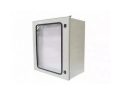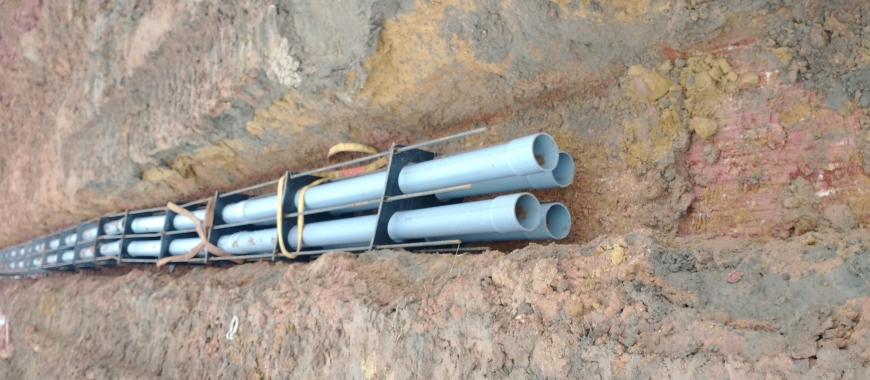
GRP pipe and FRP pipe are interchangeable terms for composite pipes made from a polymer matrix reinforced with glass fibers. GRP pipe and FRP pipe are both composite materials widely used in modern construction and industrial applications. GRP pipe stands for Glass Reinforced Plastic pipe, which is made by reinforcing a plastic matrix with glass fibers, offering enhanced strength, corrosion resistance, and durability. It is commonly used in water supply, sewage systems, and chemical transport. On the other hand, FRP pipe refers to Fiber Reinforced Plastic pipe, a broader category that includes various fibers like glass, carbon, aramid (Kevlar), or basalt embedded in a plastic resin matrix. FRP pipes are known for their high strength-to-weight ratio, flexibility, and resistance to environmental factors. Both materials are essential in building long-lasting infrastructure, particularly in environments where traditional materials like steel would corrode or fail.
What is the Difference between GRP pipe and FRP pipe
When comparing GRP pipes and FRP pipes, it’s important to understand their core differences in terms of materials, applications, and performance characteristics. The distinction lies in the reinforcement fibers used in each type of pipe and how this affects their properties.
finition and Composition
- GRP Full Form: GRP stands for Glass-Reinforced Plastic, a composite material made by embedding glass fibers into a plastic resin matrix. The glass fibers provide the pipes with strength, durability, and resistance to corrosion, making them ideal for a wide range of applications, especially in water and chemical transportation.
- FRP Full Form: FRP stands for Fiber-Reinforced Plastic. This is a broader category of composite materials in which fibers—such as glass, carbon, basalt, or aramid (commonly known as Kevlar)—are embedded into a plastic resin. Depending on the application, the type of fiber used in FRP pipes can be tailored to enhance specific properties, offering greater flexibility or superior heat resistance. In addition to pipes, fiberglass reinforced plastic frp tanks are also widely used for storage solutions, offering excellent corrosion resistance and strength, particularly for industries like chemical processing and water treatment.
Key Differences Between GRP and FRP Pipe
Material Reinforcement
The main distinction between GRP pipes and FRP pipes is the type of reinforcement material used:
- GRP Pipe: These pipes rely solely on glass fibers for reinforcement. Glass fibers are widely recognized for their ability to provide strength and resistance to corrosion, making them highly suitable for water systems, sewage systems, and chemical plants.
- FRP Pipe: FRP pipes can use a variety of fibers depending on the required application. Carbon fibers are often used to enhance the strength and stiffness of the pipes, making them ideal for applications requiring high load-bearing capacity. Basalt fibers offer superior heat resistance, and aramid fibers (like Kevlar) are known for their flexibility and impact resistance. Additionally, transparent fiber pipe can be used in specific applications where visibility of the fluid flow is required, such as in monitoring systems or for applications where visual inspection of the contents is crucial. The ability to use different types of fibers in FRP pipes allows them to perform better in certain high-performance applications like aerospace, automotive, and military uses.
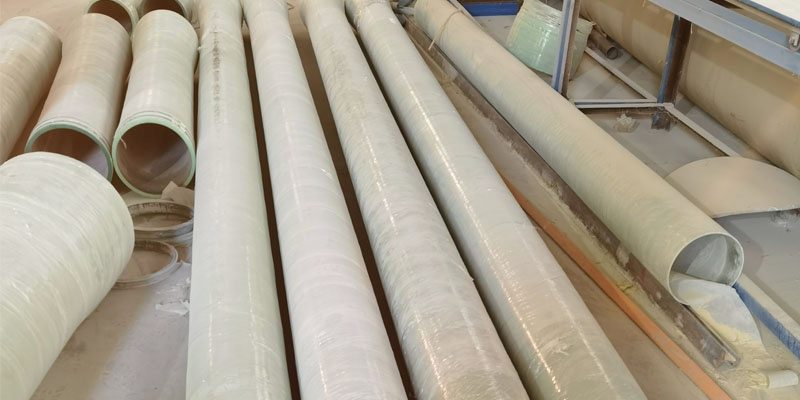
Characteristics of GRP Pipe and FRP Pipe
GRP (Glass Reinforced Plastic) and FRP (Fiber Reinforced Plastic) pipes offer a wide range of benefits due to their unique material properties, making them ideal for various industrial applications. These pipes combine strength, durability, and versatility, offering long-lasting solutions for challenging environments. Below are some key characteristics of GRP and FRP pipes:
Corrosion Resistance
Both grp pipe and frp pipe are highly resistant to corrosion, making them ideal for use in environments exposed to moisture, chemicals, and harsh conditions. Unlike traditional materials such as carbon steel or stainless steel, GRP and FRP pipes do not require additional linings or external coatings for protection, significantly reducing maintenance and replacement costs over time.
Lightweight
One of the standout characteristics of grp pipe and frp pipe is their lightweight nature. FRP pipes weigh only one-sixth the weight of steel products and 10% the weight of similar concrete products. This makes them easier to transport, handle, and install, which in turn reduces transportation and labor costs. The lightweight design also makes them suitable for installation in areas where space and weight are critical factors, such as offshore drilling rigs and high-rise buildings.
Strength-to-Weight Ratio
When considering the strength-to-weight ratio, GRP and FRP pipes outperform traditional materials such as carbon steel (CS) and stainless steel (SS). Despite being much lighter, FRP pipe tensile strength is comparable to or even exceeds that of carbon steel, making them highly effective in demanding applications where both strength and weight are important factors.
Electrical Properties
GRP and FRP pipes are non-conductive, meaning they do not transmit electricity. This property makes them ideal for use in industries where electrical insulation is important, such as in electrical or telecommunications applications. Additionally, some manufacturers offer electrically conductive FRP pipes, which are used in specific applications, such as transporting fluids like jet fuel, where controlled conductivity is required.
Dimensional Stability
Both GRP and FRP pipes meet strict standards for material stiffness, dimensional tolerances, and weight. They offer excellent dimensional stability, meaning that the pipes retain their shape and structural integrity over time, even under extreme conditions. This stability ensures that GRP and FRP pipes continue to function effectively throughout their service life, maintaining high performance and reducing the need for frequent adjustments or replacements.
Low Maintenance
Due to their resistance to corrosion and environmental damage, GRP and FRP pipes require minimal maintenance. These pipes do not rust like metal pipes and are easy to clean, reducing the need for frequent repairs and maintenance. Additionally, they require little protection from environmental elements, making them a cost-effective option for long-term piping solutions in industries such as chemical processing, water treatment, and power plants.
Thermal Insulation
FRP pipes have excellent thermal insulation properties, with a low thermal conductivity ranging from 1.25 to 1.67 kJ/(mhK), which is significantly lower than that of metals. This makes FRP pipes ideal for use in high-temperature environments, such as those found in the aerospace, defense, and chemical industries. The ability of high temperature FRP pipe to resist extreme temperatures makes them suitable for applications requiring thermal protection and ablation resistance, including protecting spacecraft from high-speed airflow and extreme temperatures.
Easy to Mold
Both GRP and FRP pipes are highly flexible in terms of manufacturing. They can be molded into complex shapes using various molding processes. The molding process is simple and cost-effective, especially for small quantities or complex designs that are difficult to mold with traditional materials. This adaptability in shaping makes GRP pipe and FRP pipe suitable for a wide range of custom applications, whether in industrial piping systems, architectural designs, or specialized equipment.
The Price of GRP Pipe and FRP Pipe
When evaluating the cost of GRP (Glass Reinforced Plastic) pipes and FRP (Fiber Reinforced Plastic) pipes, it is important to consider several factors that influence their pricing. Both GRP pipe and FRP pipe are composite materials, but their differences in reinforcement fibers, production methods, and specific application requirements result in varying price ranges.
| Factors | GRP Pipe | FRP Pipe |
|---|---|---|
| Material Costs | Cheaper, uses only glass fibers which are cost-effective | More expensive, uses advanced fibers like carbon, basalt, or aramid |
| Production Methods | Manufactured using traditional winding or molding methods, less complex | Requires sophisticated processes like pultrusion or filament winding |
| Customization and Specialty Fibers | Limited customization compared to FRP pipes | Highly customizable with various reinforcement fibers for specialized applications |
| Typical Price Ranges | $5 - $20 per meter (50mm to 200mm), $30 - $100 per meter (above 300mm) | $20 - $50 per meter (50mm to 200mm), $60 - $150 per meter (above 200mm) |
| Applications | Ideal for municipal water systems, sewage, water treatment, and chemical plants | Preferred for industries requiring higher strength, flexibility, or heat resistance (e.g., aerospace, marine) |
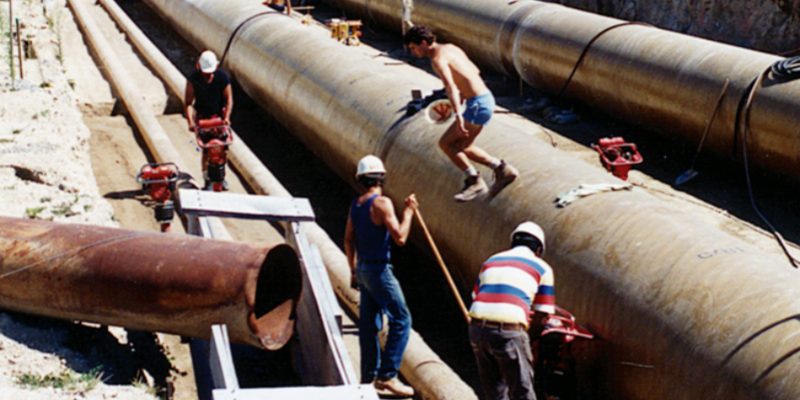
Why Choose FRP Pipe Experts for Industrial Pipe Repairs
Key Applications of GRP Pipe and FRP Pipe
GRP and FRP pipes are widely used in various industries due to their unique properties, including high durability, corrosion resistance, and the ability to withstand extreme environmental conditions. While GRP pipes are typically used for more general applications due to their cost-effectiveness, FRP pipes are favored in high-performance settings where superior strength, flexibility, and heat resistance are required. Below are the key applications of both types of pipes:
Water Supply and Sewage Systems
Both GRP pipe and FRP pipe are commonly used in municipal water systems, sewage infrastructure, and wastewater treatment. Their corrosion resistance makes them ideal for environments exposed to moisture, chemicals, and harsh conditions. GRP pipes are particularly valued for their lightweight design, which reduces installation costs, while FRP pipes are used in specialized cases where higher strength or flexibility is required.
Chemical and Industrial Applications
GRP pipe and FRP pipe excel in chemical and industrial applications where they are exposed to corrosive substances, acids, alkalis, and solvents. GRP pipes are ideal for less demanding chemical processing, while FRP pipes, often reinforced with advanced materials like carbon or aramid fibers, offer superior resistance to extreme chemical environments, making them essential for industries like petrochemicals, industrial waste disposal, and chemical processing.
Oil and Gas Industry
In the oil and gas industry, FRP pipes are extensively used for offshore drilling, pipeline transportation, and processing equipment. Their resistance to saltwater corrosion, ability to withstand high-pressure environments, and lightweight properties make them ideal for offshore applications. GRP pipes are also used in some oil and gas applications where the requirements are less demanding and the cost-efficiency is a priority.
Marine Industry
The marine industry benefits from the use of FRP pipes, particularly in offshore rigs, water treatment plants, and marine-based infrastructure. FRP pipes provide excellent resistance to saltwater corrosion, high pressures, and biofouling, making them ideal for seawater transport and firefighting systems on ships. Their adaptability in complex shapes is beneficial in marine applications, where space constraints often demand customized solutions.
Power Plants
In power plants, both GRP and FRP pipes are used for transporting water, chemicals, and gases. Their corrosion resistance and thermal stability make them well-suited for applications such as cooling systems, flue-gas desulfurization (FGD) systems, and industrial water treatment. FRP pipes are particularly valuable in environments with high temperatures or aggressive chemicals, while GRP pipes are often used in less severe conditions.
Mining and Metal Production
GRP and FRP pipes are used in mining operations for transporting slurry, dewatering systems, and industrial waste. Their strength and resistance to wear and corrosion make them ideal for environments where harsh chemicals and high temperatures are common. FRP pipes are also used in high-pressure applications in metal production, where they are exposed to corrosive elements and extreme conditions.
Flue-Gas Desulfurization (FGD) Systems
Both GRP and FRP pipes are employed in Flue-gas Desulfurization (FGD) systems to remove sulfur dioxide from exhaust gases. These pipes need to withstand high temperatures, chemical exposure, and moisture, making GRP pipes a cost-effective solution for less demanding systems and FRP pipes the ideal choice for more aggressive FGD environments, where durability is critical.
Key Features of the GRP FRP Pipe Filament Winding Machine
Advantages of GRP Pipe and FRP Pipe
GRP (Glass Reinforced Plastic) and FRP (Fiber Reinforced Plastic) pipes offer a variety of benefits that make them highly desirable in many industries. Both materials are known for their strength, durability, and cost-effectiveness, providing long-term value and reliability across a wide range of applications.
Durability and Long Life
One of the most notable advantages of both GRP and FRP pipes is their exceptional durability. These pipes are designed to offer a long service life, especially when compared to traditional materials like steel and concrete. Their resistance to corrosion, weathering, and other environmental factors makes them ideal for use in harsh conditions, such as chemical processing plants, wastewater treatment facilities, and offshore installations.
Corrosion Resistance
Both GRP pipe and FRP pipe are highly resistant to corrosion, making them suitable for environments exposed to aggressive chemicals, moisture, and saltwater. Unlike metal pipes, which often require additional linings and coatings to prevent corrosion, GRP and FRP pipes naturally resist corrosion both internally and externally. This feature reduces maintenance and replacement costs over time, making them a more cost-effective solution for industries like oil and gas, water treatment, and chemical processing.
Lightweight and Cost-Effective
The lightweight nature of GRP pipe and FRP pipe offers several advantages, particularly in transportation and installation. These pipes are significantly lighter than their metal and concrete counterparts, which reduces handling, shipping, and installation costs. GRP pipes weigh approximately one-sixth of steel pipes, and FRP pipes weigh only about 10% of the weight of concrete pipes. This reduced weight makes the installation process faster and more efficient, further lowering overall costs.
Low Maintenance Costs
Due to their resistance to corrosion and environmental damage, GRP and FRP pipes require minimal maintenance. Unlike traditional piping materials that may degrade over time, these pipes maintain their performance and structural integrity for years, which reduces the need for frequent repairs or replacements. This results in long-term savings for industries that require continuous operation, such as power plants, water utilities, and chemical plants.
Electrical Insulation
Another key advantage of GRP and FRP pipes is their non-conductive properties. These materials do not conduct electricity, making them ideal for applications where electrical insulation is necessary, such as in electrical and telecommunications industries. Furthermore, there is no need for cathodic protection, which is often required for metal piping systems to prevent corrosion from electrical currents.
Environmental Benefits
GRP and FRP pipes are environmentally friendly materials. They are made from sustainable resources and contribute to reducing the environmental impact of construction and manufacturing processes. These pipes are also recyclable at the end of their service life, supporting sustainability efforts in industries such as water treatment, mining, and construction.
Wide Range of Applications
The versatility of GRP and FRP pipes makes them suitable for a wide range of applications in different industries. From water supply and sewage systems to chemical processing and industrial applications, these pipes offer reliable, efficient solutions. They are commonly used in municipal water systems, offshore oil rigs, marine environments, and even aerospace applications due to their adaptability and performance in demanding environments.
Economical Compared to Other Materials
GRP and FRP pipes are more cost-effective than other piping materials, such as duplex stainless steel (DSS). While FRP pipes offer high performance, they are more affordable than DSS pipes, making them a better choice for industries that need durable, high-performance piping solutions. Their lower initial cost, combined with lower maintenance and operational expenses, makes them a smart investment in the long run.
Aesthetic Benefits
In addition to their durability, GRP and FRP pipes also offer aesthetic benefits. For example, FRP pipes can be molded into various shapes and sizes to meet specific design requirements. Moreover, GRP pipes maintain a consistent finish and appearance over time because of their resistance to shrinkage and their ability to retain paint and coatings without chipping or fading.
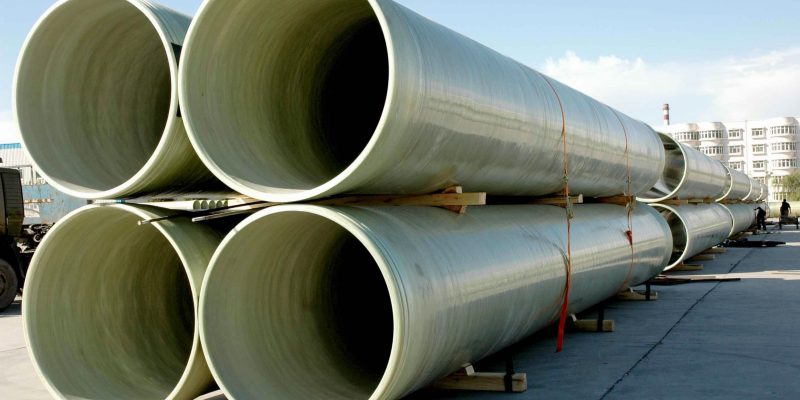
Codes and Standards of GRP Pipe and FRP Pipe
The design and application of GRP pipe and FRP pipe are governed by several internationally recognized codes and standards to ensure their reliability, performance, and safety. These standards provide the guidelines for manufacturers, engineers, and designers to produce pipes that meet the specific needs of various industries while adhering to quality, safety, and environmental regulations. Below are the most commonly used codes and standards for the design of GRP and FRP pipes.
BS EN ISO 14692: Glass-Reinforced Plastics (GRP) Piping
BS EN ISO 14692 is the most important standard for the design of GRP pipes, particularly in the petroleum and natural gas industries. This standard outlines the requirements for the material, design, construction, and testing of GRP piping systems. It provides comprehensive guidelines on topics such as hydraulic design, structural design, fire endurance, and the control of electrostatic discharge. BS EN ISO 14692 ensures that GRP pipes are capable of performing in high-pressure, high-temperature, and chemically aggressive environments, making it critical for applications in oil and gas pipelines, offshore platforms, and industrial sectors.
AWWA M45: Fiberglass Pipe Design
The AWWA M45 standard, developed by the American Water Works Association, is a widely used code for designing fiberglass pipes, particularly in water and wastewater systems. It offers guidelines on the structural design, installation, and testing of fiberglass pipes in water systems. AWWA M45 emphasizes the materials’ suitability for potable water distribution, sewage treatment, and stormwater management. It is an essential resource for designing pipes that meet the rigorous demands of water utility systems while ensuring safety, longevity, and cost-effectiveness.
UKOOA: United Kingdom Offshore Operator Association
The UKOOA standard applies specifically to the design and installation of GRP and FRP pipes in offshore environments, particularly in the oil and gas industry. The standard provides best practices and specifications for the use of fiberglass pipes in offshore installations, including considerations for corrosion resistance, flexibility, and the ability to withstand high-pressure and extreme temperatures. The UKOOA standard ensures that GRP and FRP pipes used in offshore applications meet the stringent safety and operational requirements of the oil and gas sector.
BS 7159: Code of Practice for the Design and Construction of GRP Piping Systems
BS 7159 is a UK-based standard that focuses on the design, construction, and maintenance of GRP piping systems. This code of practice is typically used for individual plants or sites where GRP piping is used to transport fluids in industries such as chemicals, water treatment, and power generation. BS 7159 provides detailed guidelines for the selection of materials, layout, testing, and installation of GRP piping systems, ensuring that the pipes perform reliably under operational stresses while adhering to safety and environmental standards.
FRP Design According to BS EN ISO 14692
In addition to the general guidelines in BS EN ISO 14692, Part 3 of the standard provides specific recommendations for the design of FRP piping systems. This section includes detailed guidance on the layout dimensions, structural design, and material properties necessary for FRP pipes to perform effectively in demanding conditions. It covers aspects such as fire resistance, the spread of fire, and the management of emissions. FRP piping systems designed according to these guidelines are equipped to handle aggressive chemical environments, high temperatures, and heavy mechanical loads, making them suitable for industries such as chemical processing, oil and gas, and power plants.
The best designs for storing and transporting FRP pipe racks
FAQs about GRP Pipe and FRP Pipe
The main difference between FRP (Fiber Reinforced Plastic) and GRP (Glass Reinforced Plastic) pipes lies in the type of reinforcement used. FRP pipes are made by embedding various types of fibers such as glass, carbon, basalt, or aramid (Kevlar) into a plastic resin matrix. This variety of fibers allows FRP pipes to be customized for specific applications based on strength, flexibility, and heat resistance. GRP pipes, on the other hand, use only glass fibers as reinforcement. This makes GRP pipes highly resistant to corrosion and chemical exposure, but they are typically less versatile compared to FRP pipes. FRP pipes are often used in applications that require additional strength or specialized properties, such as in aerospace, automotive, or marine industries, while GRP pipes are more common in water transportation, sewage systems, and chemical industries. Overall, FRP pipes can offer more robust performance in certain conditions, but GRP pipes remain a reliable and cost-effective option in standard industrial and infrastructure uses.
FRP doors and GRP doors are both types of composite doors, but they differ primarily in their reinforcement materials. FRP (Fiber Reinforced Plastic) doors are made using various fibers, such as glass, carbon, or aramid, combined with a resin matrix. These fibers provide FRP doors with superior strength, flexibility, and heat resistance, making them ideal for high-performance applications such as industrial facilities, data centers, and chemical plants. GRP (Glass Reinforced Plastic) doors, on the other hand, are specifically made using glass fibers as reinforcement. While GRP doors are still strong, GRP doors are most commonly used for standard industrial applications where chemical resistance, corrosion resistance, and weatherproofing are important. Both types of doors are non-corrosive and low-maintenance, but FRP doors offer additional flexibility and strength, making them more suited for specialized, high-traffic, or demanding environments.
FRP piping stands for Fiber Reinforced Plastic piping, which is a type of pipe made from plastic resin reinforced with fibers such as glass, carbon, aramid (Kevlar), or basalt. These fibers enhance the strength, durability, and performance of the plastic, allowing FRP piping to be used in a variety of industries and applications that require corrosion resistance, lightweight construction, and high performance. FRP piping is commonly used in industries such as oil and gas, chemical processing, water treatment, and power plants, where the pipes must resist harsh environments and maintain structural integrity over time. The flexibility of FRP piping allows it to be installed in complex systems, and it can withstand extreme temperatures, high pressures, and various chemicals. Additionally, FRP pipes are non-conductive, reducing the risk of electrical hazards in certain environments. The overall cost-effectiveness of FRP piping makes it an attractive alternative to traditional metal pipes, particularly when long-term durability is a priority.
GFRP (Glass Fiber Reinforced Plastic) and FRP (Fiber Reinforced Plastic) are similar in that they are both composite materials used in a variety of industrial applications, but they are not exactly the same. FRP is a broader term that refers to any type of plastic material reinforced with fibers. These fibers can be glass, carbon, basalt, aramid (Kevlar), or even natural fibers. Therefore, FRP includes materials that may be reinforced with a wide range of fibers, offering different properties such as increased strength, flexibility, heat resistance, and corrosion resistance. GFRP, on the other hand, is a specific subtype of FRP where the reinforcement material is exclusively glass fibers. GFRP is commonly used in a range of applications, particularly where corrosion resistance and chemical resistance are important, such as in marine environments, chemical plants, and sewage systems. While FRP can be used in a variety of industries and applications, GFRP is a more specific material often chosen for its excellent durability, lightweight properties, and cost-effectiveness. So, while all GFRP is FRP, not all FRP is GFRP—FRP can be made with other types of fibers as well.

As the editor of GangLong Fiberglass, I have years of experience and in-depth research, focusing on cable tray products, fiberglass solutions, and grille systems. I incorporate years of industry insights and practical experience into every content, committed to promoting the progress of the industry. At GangLong Fiberglass, my commitment is reflected in every product, from innovative cable trays to durable fiberglass solutions and sturdy grille systems. As an authoritative voice in the industry, my goal is to provide valuable information to professionals and businesses and promote forward-looking solutions.


